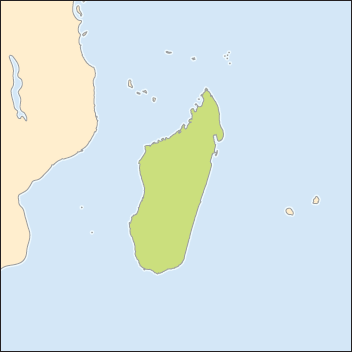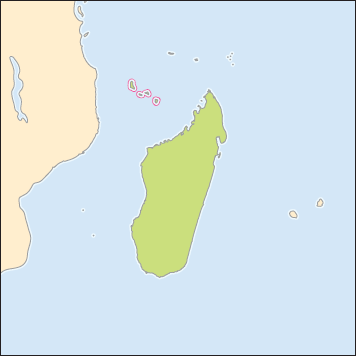
Out with the old, in with the new. (Common squirrel monkey photo by Geoff Gallice)
A whole new world! A dazzling place you’ve never been! Or so goes the song, but if you’ve ever been to the Americas, North or South, you actually have been there.
Here at last we come to the sorts of animals we imagine when we think of primates — the monkeys. And let me tell you, there are a lot of different monkeys out there. Most of the warm places in the world are crammed full of them. But one type of monkey is not quite like another. Scientists who work on these sorts of things have divided monkeys into two major groups — the old world monkeys, those that evolved in Africa and Asia; and the new world monkeys, those that evolved in central and South America.
The two groups split apart about 40 million years ago, but the curious thing is how that came to happen. After all, 40 million years ago there was no known connection between South America and Africa or Asia. We know that monkeys originally developed in the old world, so how did they come to be in the new?
The obvious thought is that they crossed the land bridge that once existed between Russia and Alaska, the same way humans eventually did, but we don’t think that’s what happened. There is absolutely zero fossil evidence to suggest that monkeys ever moved through North America or Siberia. And besides, North and South America were not yet connected, and wouldn’t be for tens of millions of years, so if monkeys had come through North America they would have been forced to stay there for a long time. As far as we know, that’s not what happened.
But there’s another way they could have made the journey. We have no way to know for certain, but the idea is that those ancient monkey pioneers that made the trip to South America to become a new type of monkey actually came from Africa, and crossed the Atlantic Ocean.
Now the Atlantic Ocean is very big, so I understand if you’re skeptical. It’s not as though the monkeys of 40 million years ago could build boats. But remember that South America and Africa are moving apart from one another, which means that the Atlantic was quite a bit smaller back then. It was still, however, a very formidable stretch of ocean, on the order of a thousand miles wide, if not wider.
The current theory goes that there existed at that time a number of islands between Africa and South America, stretching across that growing ocean. This is certainly possible, and the ocean levels of the world were a bit lower back then as well, so there may have been islands. The monkeys may have more or less accidentally crossed them over the course of many thousands of years, populations swept westward on floating debris and material with the currents (which were also different then than they are today).
So it came to be that monkeys, those adaptable, adorable, terrible creatures, set foot on a brave new world and took to the great jungles of South and central America. But what makes a new world monkey special, besides its geographic location?

Is it the fabulous whiskers? (Emperor tamarin photo by Brocken Inaglory)
New world monkeys are typically a little smaller than their old world counterparts, but the nose is where it’s at. Just as we split wet-nosed primates apart form dry-nosed primates, monkeys too are divided by what’s around their nostrils. New world monkeys have flatter, more narrow noses than the old world variety, and their nostrils face to the side instead of down or straight ahead. The new world monkeys also have prehensile, grasping tails, while the old world monkeys are stuck with tails that can’t grasp a thing. To balance this out, most new world monkeys do not have opposable thumbs, either, while the old world monkeys — and by common evolutionary ancestry, us — all have that useful trait.
There are five families in the new world monkey group, and we will examine each of them in their turn. Among them we will find monkeys that swing, monkeys that howl, and the smallest monkey in the world. The new world monkeys are unconscionably addicted to trees, and they show it in some of their names. We’ll have squirrel monkeys, owl monkeys, spider monkeys, and more. But enough with the introduction. It’s time to monkey around.
























